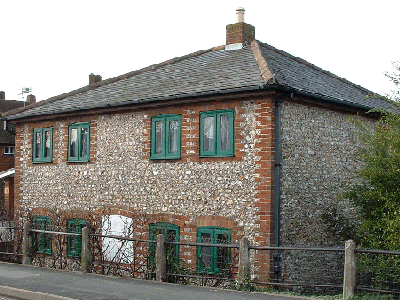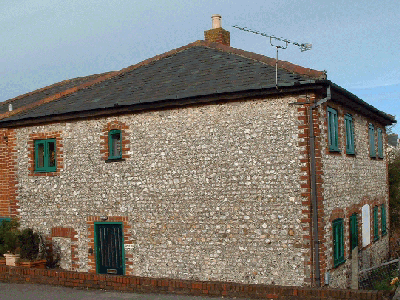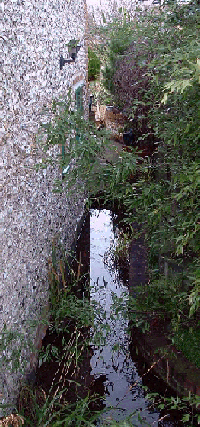
Spring Cottage is the oldest registered building in Cowplain, and is situated on the A3. It was first registered in 1823, when all buildings where required to be registered by law, but precedes the land registry act of that year.
The cottage lay empty and derelict for some years, during the 1970's, and was nearly demolished due to a development proposal, how short sighted of the local council to allow the destruction of one of Cowplains earliest surviving structures, and, some would say, one of the treasures of Hampshire. Spring Cottage was only saved due to a local residents petition, and subsequently, in the 1980's, it was restored privately. After that it never regained the listed building status it once had.
The building has an architectural style that would suggest it was built at around the mid to late 18th century, most probably between 1760 and 1780. There were very few other buildings around in the area at that time, none now surviving, and very little is known about its original function. However, it was built over a stream, which ran under the house until some years ago when, due to flooding problems, the stream was diverted and contained in an under ground pipe, and there once was a well on the property. It is not inconceivable, therefore, that this structures raison d'etrê was to provide the valuable resource of water, in order to service the customary mode of transport in those days, namely horses.

Some alterations were made during the restoration work that was carried out. The building used to be two semi detached cottages, the interior was redesigned to accommodate one family with much more room, the front door was moved and six extra windows were added, in addition to this an extension was put onto the rear of the property.
When the stream was diverted, the culvert running by the side of the house, and under it, no longer fulfilled any purpose and was an awkward area that just looked empty and forgotten about until, in the late 1990's, a pond was installed and made to resemble a stream complete with a liberal flow of water that appears to be coming from under the road...many of the more long standing locals believe it to be the return of the stream that they remember always used to be there.

Waterlooville and Cowplain did not exist before 1815, the area, as it was then, was part of the Forest of Bere stretching all the way from the Sussex border of Winchester. An isolated stretch of green, known as the Queens enclosure, seems to be all that is left of the forest in this area. A track led through the forest from Horndean to Portsmouth, but was unusable in winter, so coaches had to go around and through Havant, in order to get through.
By 1711 a road was built from London to Portsmouth, for which a toll had to be paid to the turnpike company in order to use it. This road, which we now know as the A3, replaced the track from Hordean and made it possible for all year round traffic use on what is now known as London Road.
If you know any historical details of Cowplain, and want it included here, then contact me with any information you may have.
|